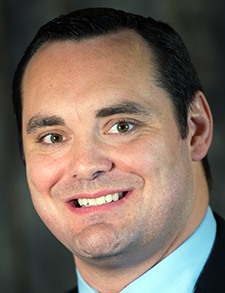The opening minutes of the monthly online gathering for SHM’s Hospital Medicine Administrators (HMA) Special Interest Group (SIG) can sound more like a support group than anything else.
“We go around checking in,” said chair Elda Dede, MPA, FHM, a hospital medicine administrator with the University of Kentucky in Lexington, Ky. “’How are things in your practice?’ And we share all the crises and victories—and how it’s going and how we’re handling it. This is our time to seek solutions and exchange best practices.”
Really, that’s the point.
SHM has 27 SIGs that are designed to “create communities of hospitalists around topics of interest, practice areas and/or care models.”
And then there’s the HMA SIG, which is very much geared to mostly non-physicians. It was formed in 2017 and has several hundred members.
“We are currently offering quarterly happy-hour gatherings, with administrators from all around the country attending. It is just us administrators,” Dede said. “We feel more comfortable asking questions. ‘Are you facing the same challenge as me? How are you solving this? How are you doing that?’”

Dr. Coons
HMA SIG vice chair Trevor Coons, who works at Mayo Clinic in Rochester, Minn. points out the group is welcoming to all SHM members, including physician leaders at any level. In fact, it can serve as the ultimate sounding board on how administrators and frontline hospitalists can work together.
“At Mayo Clinic, we have a shared leadership model,” he said of decisions he makes with his clinical counterpart. “I work closely with our physician practice chair. We’re both leaders. He understands the science behind the treatments and protocols. I have an MHA, so I’m accustomed to creating and administrating policies and procedures, so we complement each other.”
Similarly, SIG members also have access to the expertise of professionals like Dede and Coons. And they have the expertise of others.
“We partner and help each other, certainly,” Coons said. “Just because many of us work at top-tier institutions doesn’t mean we think we have all the answers. That’s where I always appreciate the collegiality and the ingenuity of some smaller hospitals and health systems. ‘Necessity is the mother of invention’ and because they may have less infrastructure in place, they have to be creative and nimble in trying new things.”
He added, “Across the group, we’re able to try a variety of solutions to common problems and can say, ‘Hey, this worked for us. Maybe you all should try it.’ That can be very helpful. The SIG partnership is symbiotic. The HMA SIG is not a group of people who pretend they have it all figured out.”
One of the SIG’s most successful projects is a mentorship initiative, Dede said.
“I was a mentee myself when I first started,” she said. “It was really useful to me to have someone walk through my challenges with me (and say), ‘This is how you do this. Stay away from that. Really get involved in this.’ That was truly useful advice.”
Coons agrees on the value of mentorship. Sometimes it’s career advice from other administrators and leaders who have already made decisions with which someone else is struggling. It’s also noteworthy that mentorship isn’t always just about practice management.
“We actually navigated a successful career transition for one of the mentees I worked with,” Coons said. “He hadn’t had to apply for a job in a while, and we just walked him through the normal things he should expect. Just having a safe person to talk to who actually makes hiring decisions was very beneficial to him. The mentee had a number of questions: ‘Do I send a thank you note?’ ‘Yes, and here is what you say in it.’ Or, ‘Is it weird to ask this question?’ ‘Absolutely not, go ahead.’ ‘Can I negotiate the start date?’ ‘Absolutely.’”
Coons adds that medical training focuses—as well it should—on clinical excellence.
“Often physicians and other care practitioners are trained only in clinical care, but they weren’t given a lot of tools to succeed as a manager/supervisor or as a leader,” he said. “The fact that they’re a really good clinician and institutional leaders have given them a vote of confidence in selecting them for leadership roles means a lot; but it still doesn’t help them answer those day-to-day questions like: ‘This is the first time I’ve had to have a performance management conversation with a colleague. How do I do this?’
“Often larger institutions have an infrastructure in place to help first-time leaders like that, but especially SIG members from smaller systems or more rural communities don’t always have that opportunity. So, it’s nice for them to have that help and validation (from the SIG).”
Another benefit of belonging to the HMA SIG, especially over the past few years, is being able to talk about all the non-medical challenges the pandemic has shone a spotlight on, including burnout, technology, and professional development.
“Life goes on, so aside from the obvious—patient care—we also need to tend to recruitment, professional development, quality improvement, research, both within our practices and in the rest of the hospital,” Dede said. “We continue to adjust the complexity of our practices to the needs of the patient population and improve leadership transparency and hospitalists’ engagement, all while the pandemic goes on.
“The SIG supports us administrators in this role of bringing our practices to a level where we can continue to process promotions, hold annual awards, promote and support quality-improvement projects and the growth of our practices in general, despite the pandemic. And that contribution of the SIG to our daily lives has been priceless.”
Richard Quinn is a freelance writer in New Jersey.